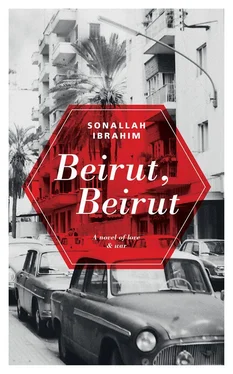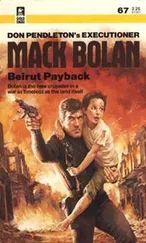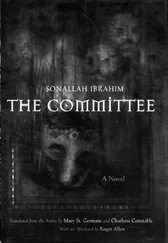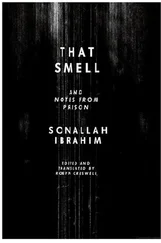Parliament member Amin Gemayel runs up behind the prime minister and pulls him by the arm, trying to assault him.
Washington. Henry Kissinger is in his office on the seventh floor of the State Department Building, talking to an American journalist: “The situation in Lebanon resembles the one in Jordan in 1970. All you need to fix it is for Syria to send in a brigade.”
A wide hall, at the back of which is the Sunni mufti of the Republic of Lebanon, Shaykh Hasan Khaled. He has a white turban on his head. On his right sits the Syrian foreign minister, Abd al-Halim Khaddam. On his left is the Shii imam in his black cloak. Next is the Syrian army’s chief of staff. Then there is Kamal Jumblatt, with his arms crossed over his chest and his eyes closed. To the left of the Imam Sadr is the leader of the Sunnis of Tripoli, Rashid Karami, and beside him Saeb Salam, the aged leader of Beirut’s Sunnis, with his Havana cigar.
A circle around a news item in a Lebanese newspaper: “Saudi Arabia has placed 40 million lira at the disposal of Saeb Salam to fight heresy and Communism.”
The main headline of another newspaper: “A new government headed by Rashid Karami with Camille Chamoun as interior minister.”
The main headline of another newspaper: “Israeli attack on the refugee camps in the south. 11 killed and 60 homes destroyed in Rashidiya.”
Beirut. The Maslakh-Karantina district. Adjoining tin-sheet shacks. Palestinian and Lebanese flags. Another shot of the same location, now turned into ruins. A group of the bombs that were dropped on it. One of the bombs is the same shape and height of a teenager. Another bomb has on it the symbol of Saudi Arabia, consisting of two crossed swords above the slogan “There Is No God But God”. The dazed face of an old woman looks out from the ruins. A barefoot little girl in an embroidered dress is carrying an infant in her arms; she sits down beside a smashed wall. A middle-aged woman covers her head with a sheer white headscarf that she has tied around her neck, letting one end of it down over her chest. She weeps, with her hand on her cheek. Beside her is a girl who looks like her, who is crying as well. A family runs in the street. The father has a bundle on his back and clutches a child with each hand. A third child walks ahead of them. Among them are several young men wearing the Palestinian checkered hatta headscarf. They smile for the camera as they raise their fingers in the victory sign. Beside them are corpses covered in Palestinian flags.
The main headline for the al-Safeer newspaper: “Imam al-Sadr announces the creation of regiments of the Lebanese ‘ Amal’ militia to defend the south. The imam explains that it is committed to realizing the demands of the dispossessed from all religious communities, ending sectarian distinctions, and defending the Palestinian revolution.”
A young man carries a machinegun on the roof of a building. He is wearing a white undershirt with the word “Amal” painted on it in European letters.
A long shot of a street. Two oil barrels on the open street, with several armed men on each side of them. There are not many pedestrians. The armed men stop them and check their ID cards. They detain some and let others go. They blindfold the detainees.
In front of an oven of the Mahallet Abu Shakir neighborhood. A pile of used shoes, modern and traditional, are scattered near the wall. Near the Green Line. A wide pit has come to serve as a cemetery for Muslims. A pile of dead bodies recently thrown onto the pile. Men’s genitalia cut off and sticking out of their mouths.
Title card:
In May, an extremist group of Shia calling itself “The Knights of Ali” killed fifty people, among them a number of leftists.
Young men run, carrying wrapped loaves of bread on their shoulders. A street corner. A woman in a short skirt runs toward a car where an armed man is taking cover.
The front page of a Lebanese newspaper. Main headline: “Phalangist leader confesses”. Another headline: “Saeed Naeem al-Asmar admits that he worked as a sniper in the Chiyah neighborhood, and says that it was armed Phalangists under the leadership of Joseph Abu Aasi who caused the massacre of Ain al-Remanneh.” A third headline: “al-Asmar accuses officials of the Deuxième Bureau and others from Jordanian intelligence of aiding the Phalangists in their military operations.”
A headline in the al-Nahar newspaper: “Israeli artillery bombards the south.”
A headline in the al-Safeer newspaper: “Washington discloses US arms deal recently sent to Lebanon by way of the American Embassy in Beirut.”
Another headline in the same paper: “Interpol warns of the arrival in Beirut of 7 European terrorists acting as Zionist agents.”
The village of Bteghrine. Slogans on the walls of houses: “All the idiots support the Palestinian revolution.” Another slogan: “Down with Palestine.”
An Israeli bombardment of the city of Tyre, by land, sea and air.
A newspaper headline: “Kissinger heads to Egypt on his 11th shuttle diplomacy tour.”
Newspaper headlines: “Signing of the Sinai Agreement between Egypt and Israel on September 1.” “Agence France Presse says that Washington is the biggest winner in this deal.” “Yasser Arafat warns: ‘The agreement leaves the Syrians and Palestinians standing alone and will lead to another war. Israel and America are making a delusional mistake if they believe that the Egyptian Army will stand aside and do nothing while the Palestinian revolution risks being wiped out.’” “The Soviet Union officially asks from the United States that the Geneva Conference be invited to convene with the participation of the PLO.”
The first page of the magazine al-Karazah , published by Egypt’s Coptic Church. A photograph of Abba Samuel, in charge of foreign relations for the Egyptian Church, in a meeting with members of the World Council of Churches.
Headline: “Investigations by the US Congress have exposed the connection between the World Council of Churches, which John Foster Dulles helped found, with the CIA.”
A paragraph from an article in a West German magazine about the Egyptian Church. A photo of Abba Samuel, with this caption below it: “Abba Samuel, one of the most prominent leaders in the Coptic Church, played a key role in helping members of wealthy Coptic families that were harmed by confiscation orders and Nasserist nationalizations, taking advantage of his wide-ranging international connections, especially in West Germany. For many of them, he obtained significant postings in foreign business and banking institutions, which Sadat’s ‘Open Door’ policy opened up for them.”
Beirut. Journalists surround Rashid Karami, the Lebanese prime minister, in a white suit and colorful tie with a grin on his face. He is telling the journalists: “President Frangieh is a great leader and I am confident that the final years of his presidency will go down in history.”
Headline of a Lebanese newspaper: “Armed Maronites from Zgharta, the stronghold of President Frangieh, take 25 hostages from Tripoli, stronghold of Prime Minister Rashid Karami, killing 12 of them.”
Headline of another newspaper: “Deadly outburst in 3 cities in the north. Phalangists demand deployment of the army. Egyptian ‘Voice of the Arabs’ radio attacks the Palestinian resistance and calls on the Lebanese Army to be deployed on the streets in order to strike it.’’
A circle around a paragraph from an editorial in the Egyptian newspaper, Akhbar al-Yawm : “… the current clashes are part of a conspiracy of rejection in order to frustrate the peaceful arrangement between Egypt and Israel with the goal of creating a situation that forces Syria to get involved, and if that happens, then Israel will be forced to get involved.’’
Читать дальше












